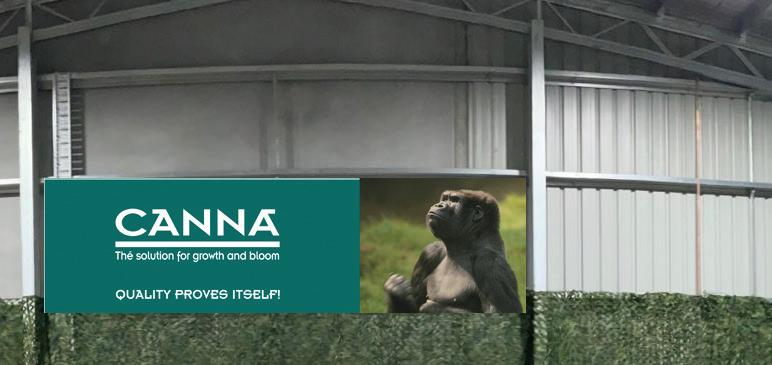







As we bid farewell to those sweaty end-of-summer days and welcome the vibrant colours of autumn, there’s an undeniable sense of anticipation in the air—it’s cool enough to get our hands dirty in the garden again! Or is it?
In our ninth edition of CANNATalk, we delve into the fascinating realm of soil-less gardening and give you some expert advice on how to get started in the sometimes-confusing world of hydroponics. We’re also shining the spotlight on one of the world’s most beloved veggies—the humble, yet delicious potato, we take a closer look at CANNA Classic, and we look at the pesky problem of hydroponic root rot.
It’s also time to celebrate! 2024 is also the 30th Anniversary of CANNA in Australia and New Zealand—and we couldn’t have done it without you! Thank you to all our loyal customers and distributors, and thank you for your support over the last three decades. We love our friends in the lands downunder, and we love bringing you the best in Dutch crop cultivation techniques and products. Here’s to the next 30!
As always, if you have a question, query, or comment—please get in touch! You can find us in the questions section at www.canna.co.nz. Happy gardening!



In the world of hydroponics, one nutrient system reigns supreme—CANNA Classic. Designed specifically for run-towaste or open hydroponic systems, CANNA Classic ensures plants receive a continuous supply of fresh nutrients with each feed, while minimising the risk of diseases.
What sets CANNA Classic apart is its compatibility with inert substrates commonly used in these systems. Unlike other nutrients, CANNA Classic doesn’t interact with the substrate, allowing growers to maintain precise control over nutrient levels.
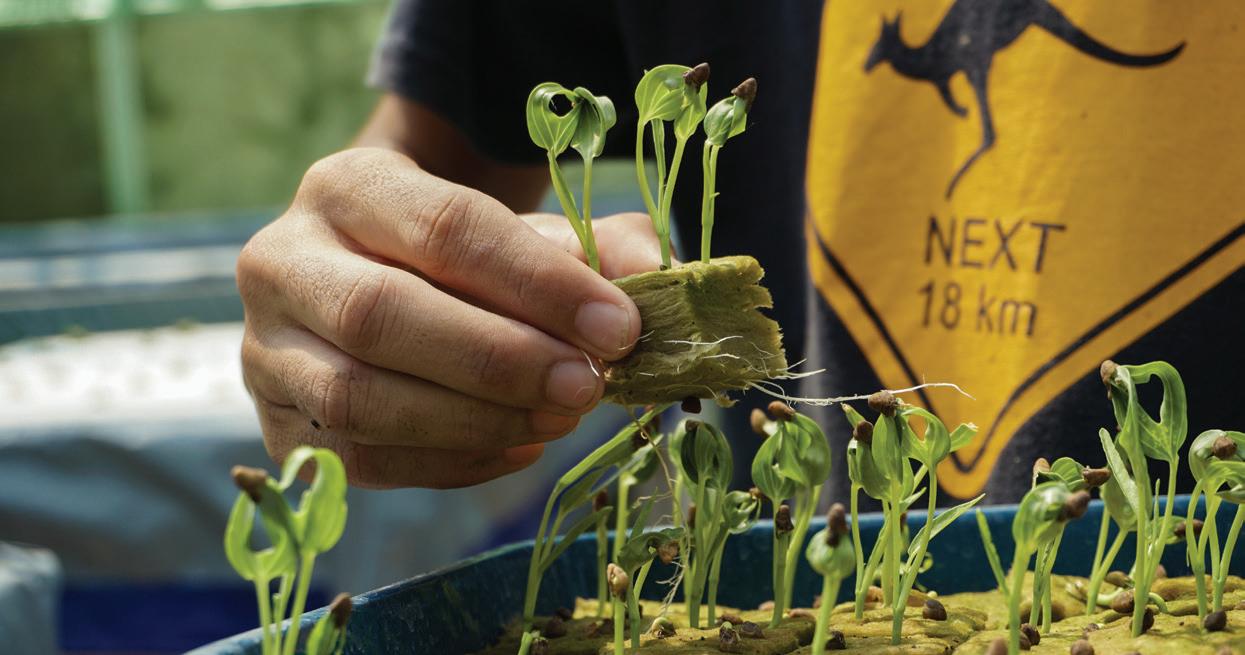
CANNA Classic Vega, formulated for the growth phase, lays the foundation for outstanding plant development. Its rich blend of absorbable nitrogen compounds, highquality EDDHA iron chelate, and trace elements guarantees complete nutrient absorption from the start, and promotes robust root growth and abundant side shoots.
For the flowering phase, there’s CANNA Classic Flores. Its carefully balanced composition, accounting for the plant’s changing needs, ensures optimal nutrient uptake during this critical period. With an emphasis on potassium and phosphorus, Classic Flores provides the perfect fuel for stunning blooms.
When it comes to hydroponic systems, CANNA Classic is the nutrient of choice, delivering exceptional results and empowering growers to achieve precision and perfection.

If you’re a hydroponic enthusiast, aiming for optimal growth on inert substrates like rock wool, then look no further than CANNA Classic. Specially formulated for run-to-waste hydroponics systems, this nutrient solution is your key to achieving exceptional results. But how exactly can you harness its power? Let’s dive into the world of precision growing with CANNA Classic.
One crucial aspect of using CANNA Classic is understanding the A and B parts of the nutrient. Both CANNA Classic Vega and CANNA Classic Flores, designed for the growing and blooming phases respectively, consist of two components: A and B. It’s essential to keep these parts separate. When combined prematurely, certain elements can clump together, hindering nutrient absorption. To avoid this, always add the A component first, followed by the B component.


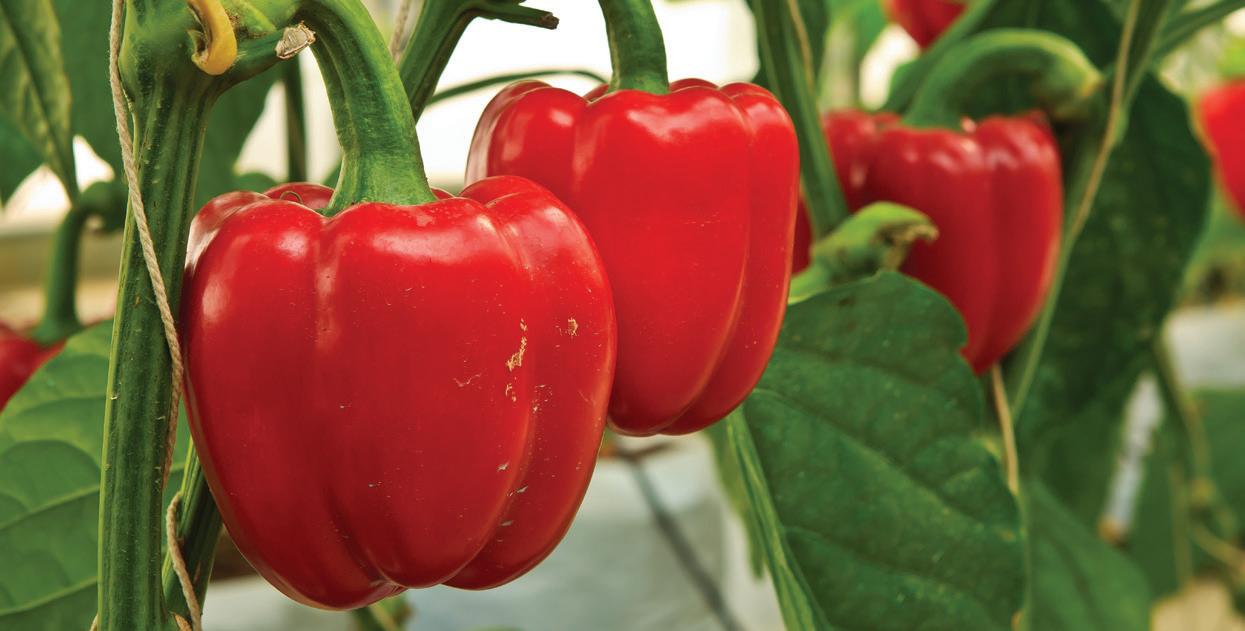
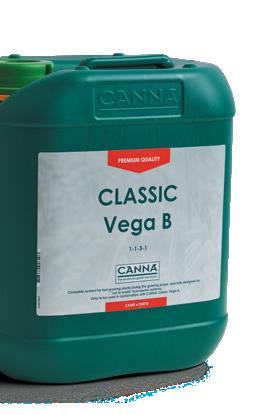

Shake the bottle well before use.
2. Fill the nutrient reservoir with water.
3. Add CANNA Classic Vega to the nutrient reservoir at a dilution ratio of 1:250 (400 ml A and 400 ml B per 100 L of water).
4. First, add Classic Vega A to the nutrient reservoir, stir well.
5. Then, add Classic Vega B, stir well, and let the mixture stand for a few hours.
6. The electrical conductivity (EC) of the solution should range between 1.5 - 2.4 mS/cm2 when dissolved in water.
7. Maintain a pH level between 5.2 - 6.2.
8. For intensive growth, drip feed the plants 1-3 times a day with this nutrient, ensuring the drain accounts for 10% to 20% of the solution. Additionally, flush with water every 1-2 weeks.
Using CANNA Classic Flores is the same as using Classic Vega, except at step six, the electrical conductivity (EC) of the solution should range between 1.8 - 2.7 mS/cm2 when dissolved in water. It really is as easy as one-two-three!
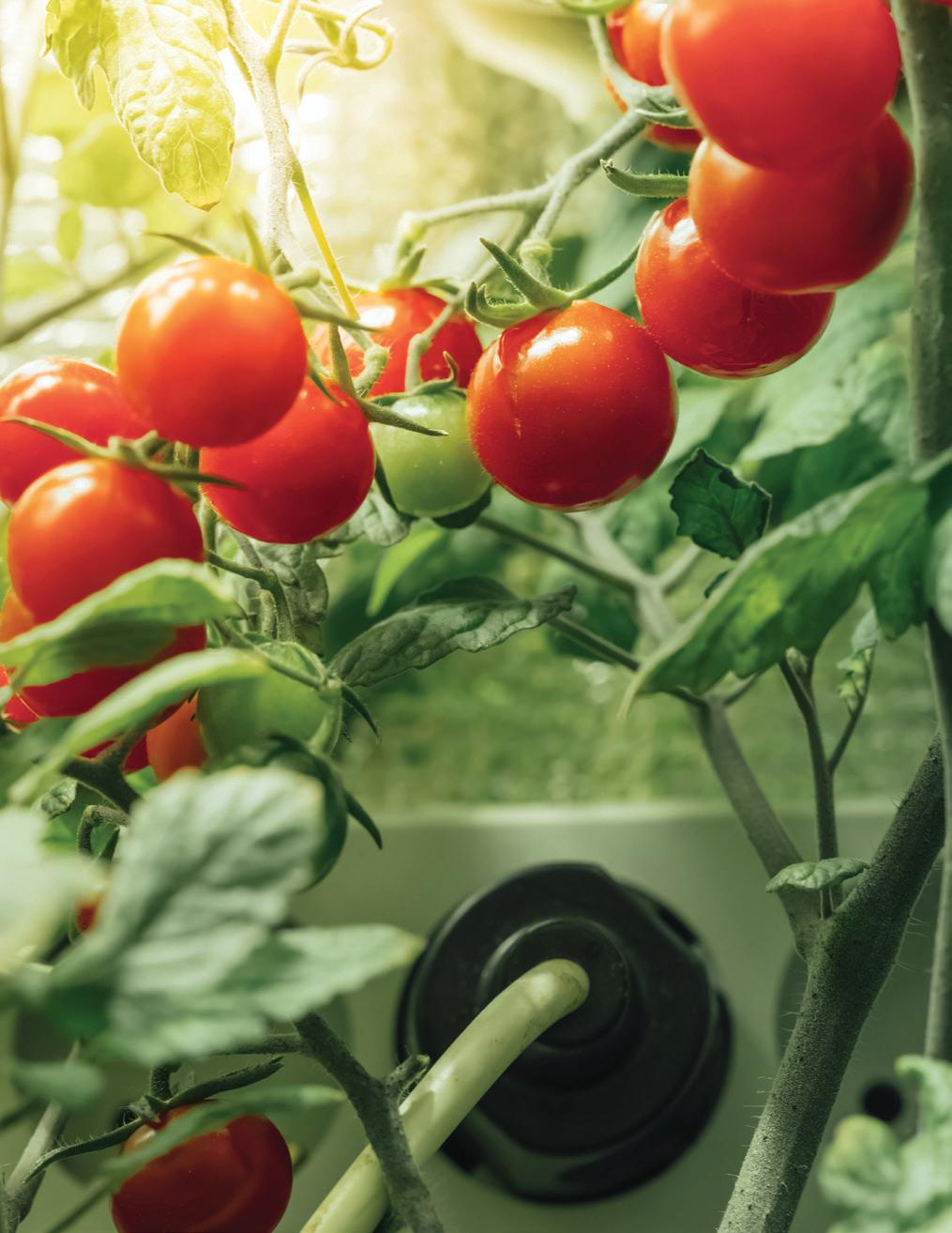
So embark on a journey of precision growing with CANNA Classic, and unlock the full potential of your hydroponic garden. With meticulous attention to detail and the power of CANNA Classic at your fingertips, extraordinary yields await. Say goodbye to guesswork and embrace the art of cultivation mastery. Your plants will thank you.

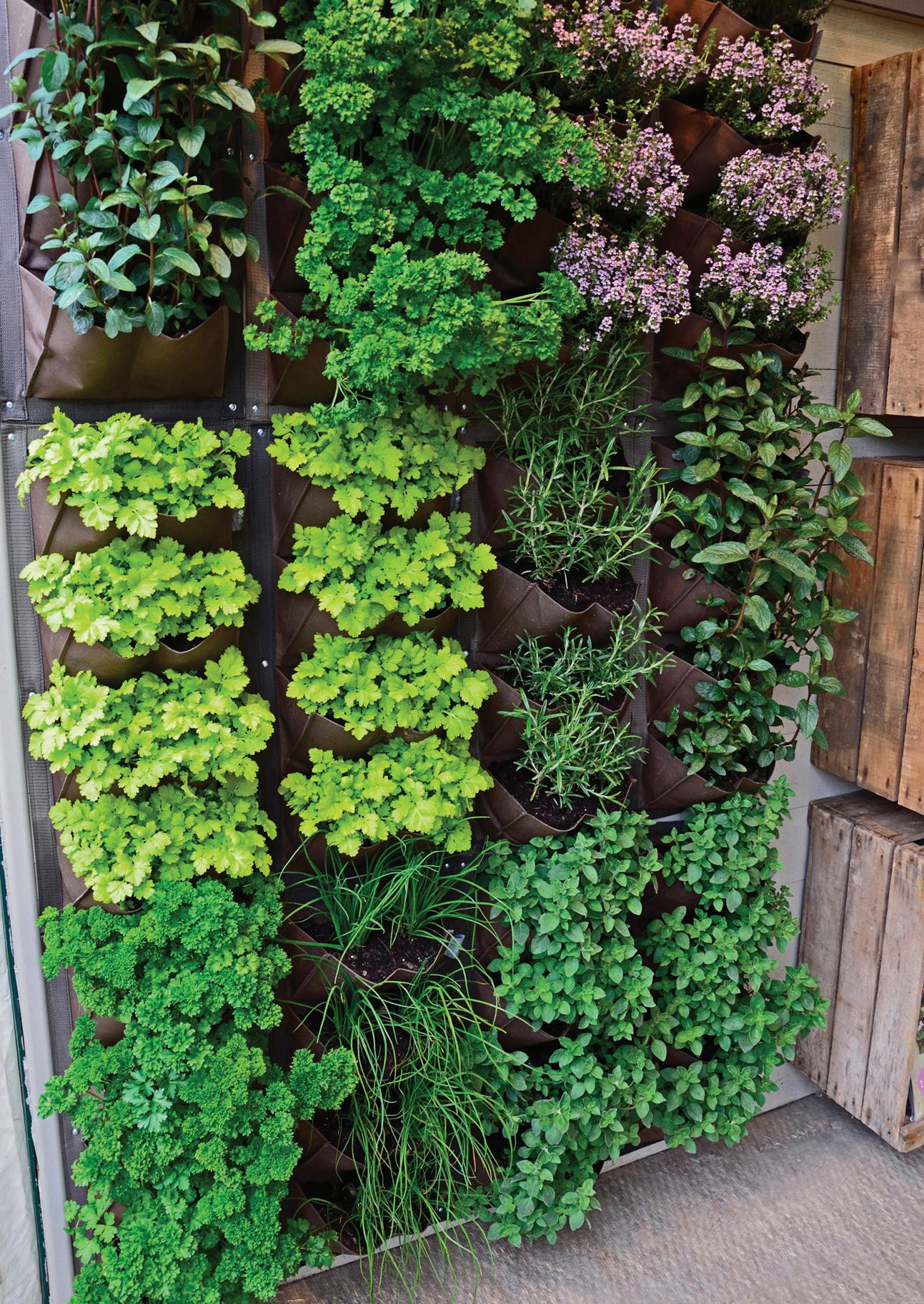
Simply put, hydroponic systems use water and nutrients to grow plants. Growing plants solely with water and nutrients poses some challenges but with a bit of care and attention, it’s a fabulously cheap, clean and environmentally friendly way to maximise output in small spaces.
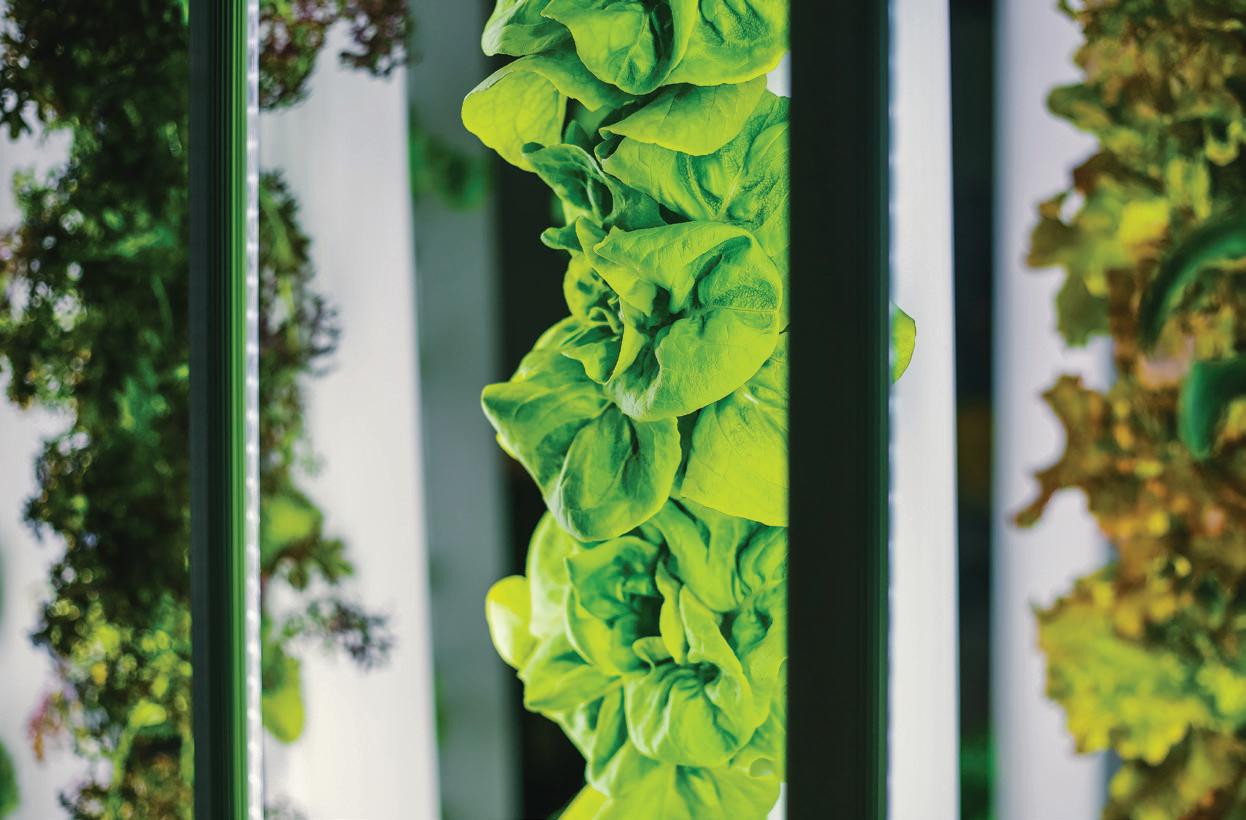
Most supermarket produce is grown using hydroponics, including tomatoes, green leafy vegetables, pumpkins, beans, peas and much, much more. In fact, 80% of fresh food in Australian supermarkets is grown using hydroponic systems. This is because food in hydroponic systems grows faster, yields more, takes up less space, and uses less water—what’s not to love?
But it can be difficult to get your head around all the different types of
hydroponic set-ups and get a toehold in this fascinating and abundant form of gardening. This article focuses on NFT systems— one of the easiest ways to get started in the wonderful world of hydroponics.
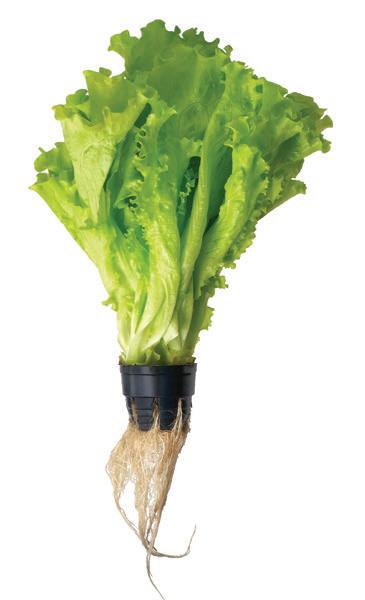
The Nutrient Film Technique (NFT) hydroponic system is perfect for growing shallowrooted, lightweight plants like herbs, spinach, and leafy greens. Whether you’re

a novice or an expert, NFT offers a self-contained, clean, and odour-free solution that can be tailored to any available spot, including wall gardens. Say goodbye to heavy potting mix and embrace the simplicity of NFT. So how does it work? The NFT system keeps the waternutrient solution flowing continuously in a loop around the reservoir and growing tray. No timers are required, but you will need two pumps and an air stone to oxygenate the water.

Your plants are nestled in tubes or channels, allowing the nutrient-rich water to gently flow over their bare roots. Easy peasy!
To set up your NFT system, gather your equipment, including an air stone, submersible water pump, water reservoir bucket, tubing, and nutrient solution like CANNA Classic Vega. Connect the reservoir to the pipe holding your seedling pots using fill and drain tubes. Ensure proper drainage by positioning the pipe at a slight angle and
drill holes for the seedling pots. Place your seedlings in the pots and position them in the grow pipe. Voila! You’re ready to grow.
Maintaining your NFT system is key to success. Change the nutrient solution in the reservoir weekly and stay vigilant for any mechanical issues that could cause a lack of water supply to your plants. Keep an eye on root-related diseases and maintain a stable pH level. Providing sufficient light is crucial, so aim for at least six hours of light per day, preferably 12-16 hours. If using artificial lights, consult your local hydroponic store for the optimal distance.
Embrace the simplicity, precision, and efficiency of the Nutrient Film Technique, and watch your plants thrive like never before!
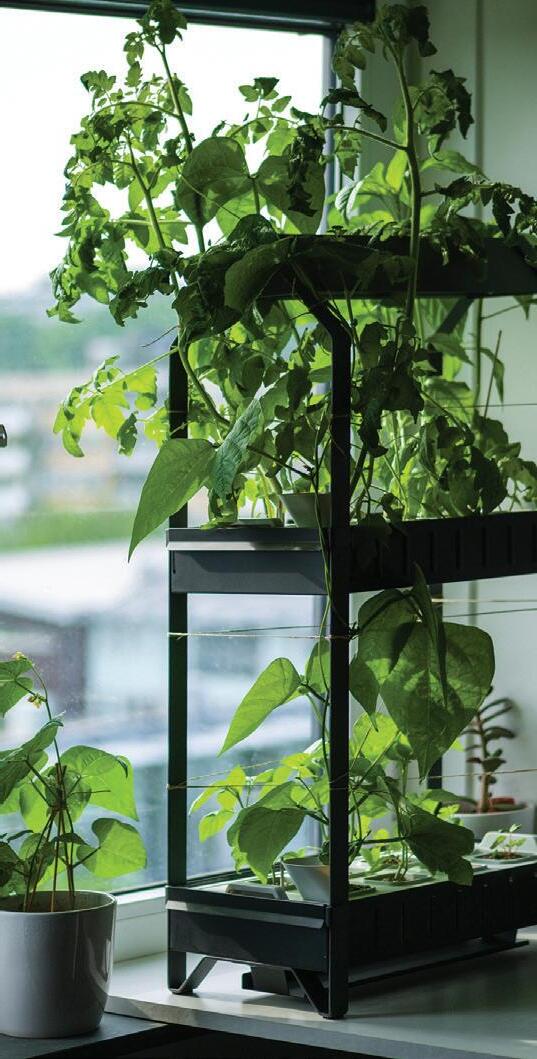
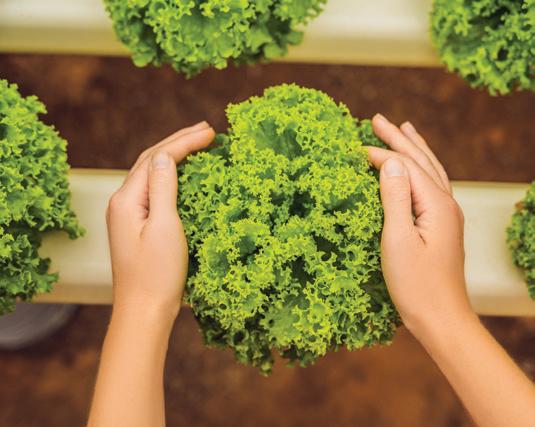

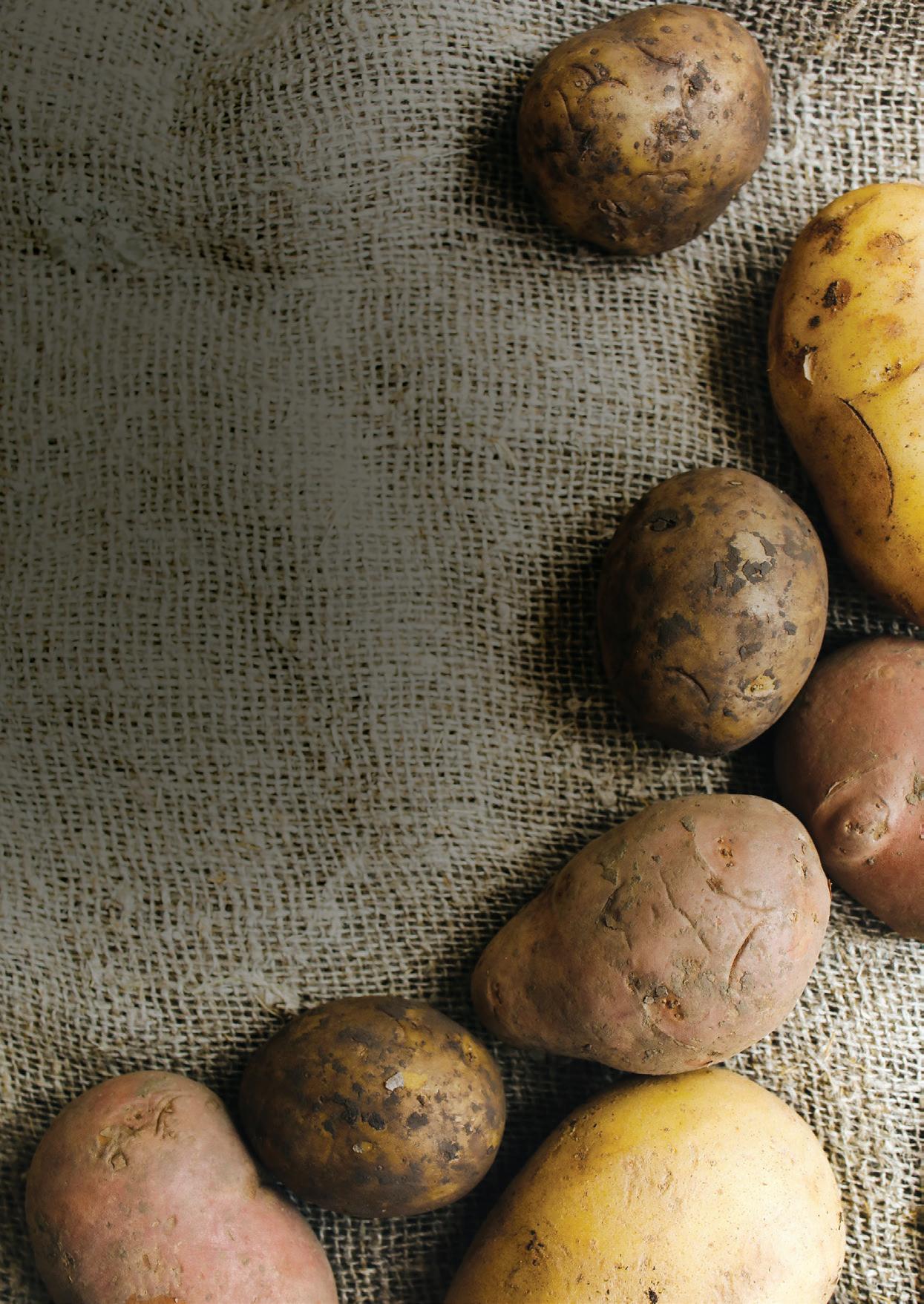
Roasted, mashed, stewed, or chipped, nothing beats a potato for comfort and cosiness—it’s the security blanket of the veggie world! However, this delicious tuber was not always so universally beloved. On its introduction to Europe and Africa from South America in the sixteenth century it took people a lot of convincing that it wasn’t poisonous and unpalatable, and spuds usually only took off as a foodstuff when a more traditional local crop failed.
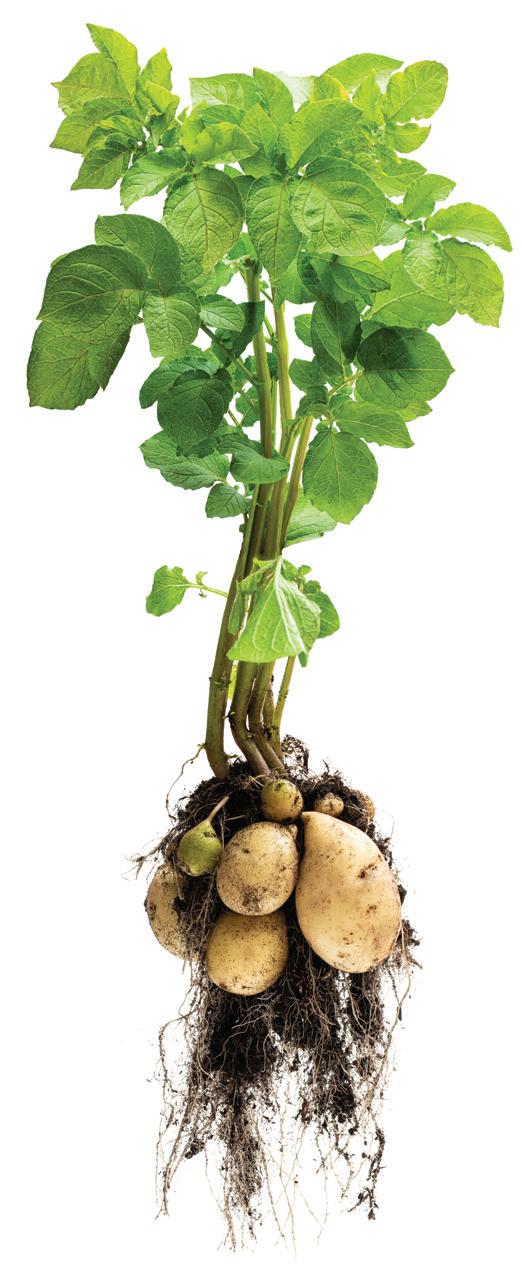
Potatoes were first domesticated in Peru and Bolivia between 7,000 to 10,000 years ago, where they were such an important staple that local ceramicists immortalised them in potato-shaped vessels and vases. Thought to have been introduced into Europe by pirate/privateer Sir Francis Drake, among others, potatoes slowly but surely spread across the continent and, thanks to their high nutritional value and ease of storage, led to population explosions in several countries by the eighteenth century, and are even credited with helping to fuel England’s Industrial Revolution.
When potatoes came to China during the Ming Dynasty, it immediately became a delicacy of the Imperial Family, and today the country leads the world in potato production, growing over 99 million tonnes of the veggie in 2016. So nourishing are these hardy ground-dwellers, that there have been times when they’ve literally been worth their weight in gold! During the Alaskan Klondike gold rush of 1897-98, it’s rumoured that people would trade gold nuggets for a single grimy tuber.
Potatoes are part of the nightshade family—which also includes tomatoes, capsicums, and eggplants—and like these veggies,




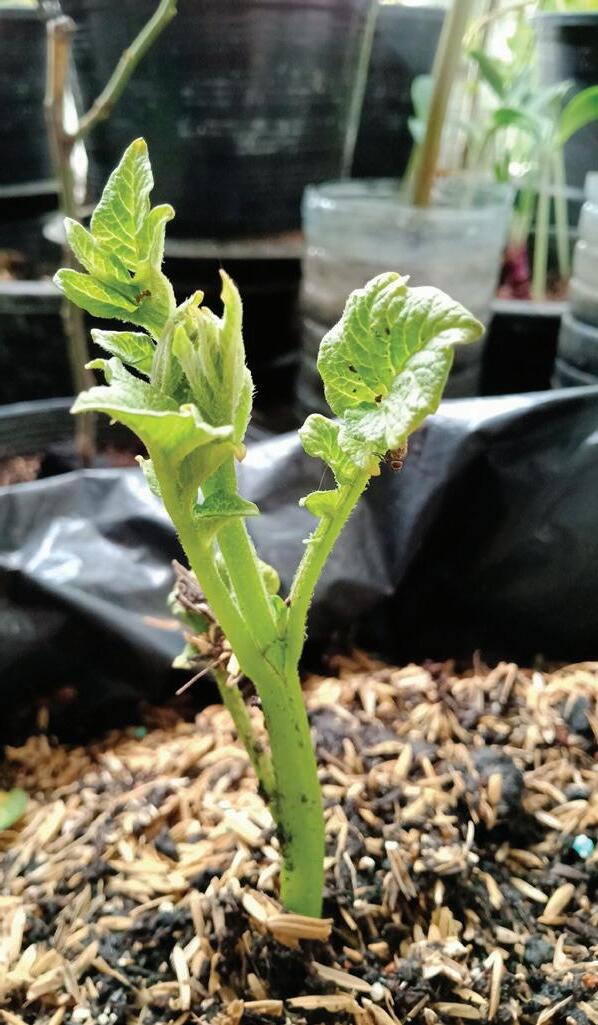
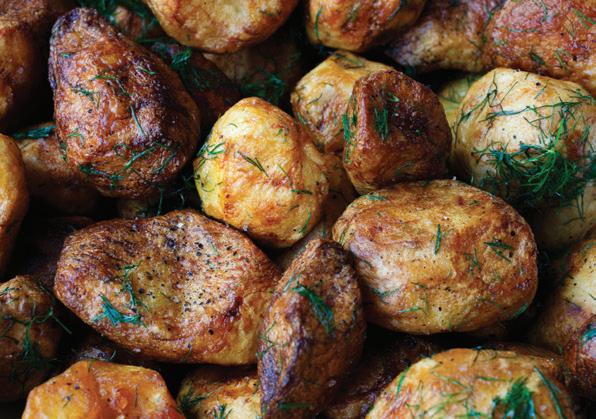
potato leaves and stems can be poisonous if consumed in large quantities or if the tuber has turned green.
There are over 5,000 different varieties of potato in the world, and almost all of them are descended from the original species that was domesticated in the lowlands of Peru. The most familiar varieties in Australia include Kipfler, Desiree and Sebago, but there are hundreds of other types available—it is Australia’s largest vegetable crop by far.
There are countless ways to cook with spuds—in fact, it might be quicker to list the things they don’t go well in. (Although we can’t actually think of any!)
From chocolate cake to vodka, potatoes really are incredibly versatile, and there’s a different variety to suit every recipe you can think of. Waxy, new season potatoes (check to see if the skin can be scraped off with a fingernail to test their freshness) are great in soups and salads, while starchy varieties like King Edward and Dutch Cream are perfect for mash, roasts and chips.

Potatoes are so easy to grow they’ll sprout in zero gravity! They were famously the first veggie to be grown in space, which really makes the daily trek out to the veggie patch pale in comparison.
In Australia, potatoes should be planted between September and February in cool and temperate areas, and March and August in the hot north. They need quite a lot of space (and depth), so a dedicated bed is great, or grab some polystyrene fruit boxes and stack them up to create a vertical space (tires are a no no because of toxic chemicals that can leak into the soil).
Once you’ve decided on the location, mix compost with wellaged manure and straw to a depth of 15 cm, water, then lay the spuds out with 25 cm between them and cover with another 15 cm of the soil mix. When sprouts poke through, add another 15cm, then do it once more when the sprouts come through again. Make sure you get good quality, disease-free seeding potatoes and expose them to light for a week or so before planting to get the eyes ready to sprout.
When the leaves begin to yellow (between 12-20 weeks depending on the variety), it’s time to harvest your new taters, and as all the leaves die down you can root around for the big boys and pack them carefully away in a cool, dark place for months.
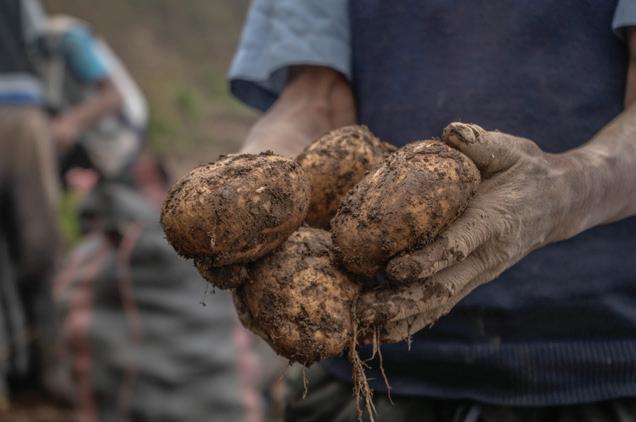

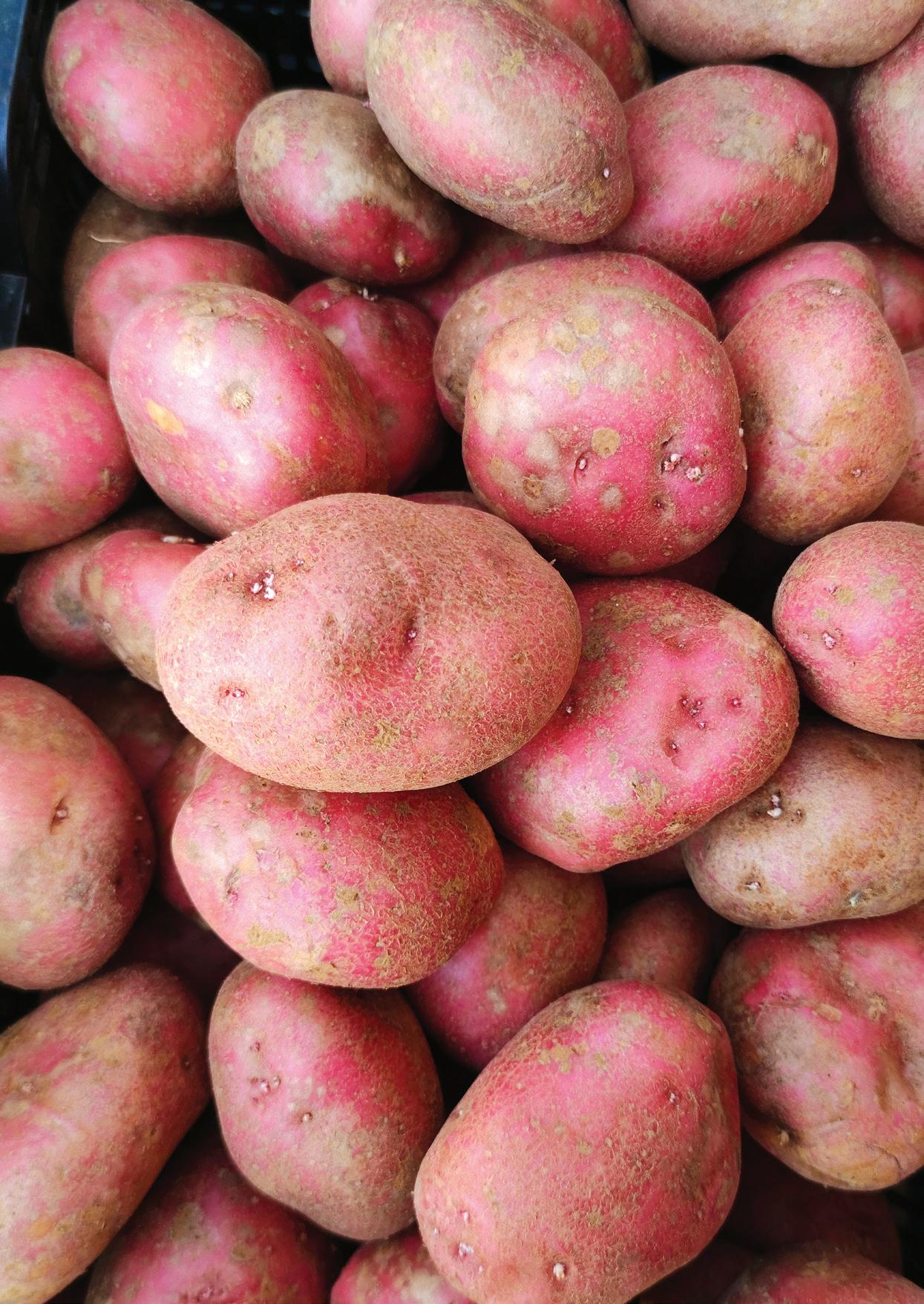
If you’ve prepared the soil well (aim for a PH between 5.5-6), potatoes shouldn’t need much extra food (except perhaps some liquid seaweed at planting and flowering), and it’s important not to overwater, as this leads to a raft of diseases that can wipe out your crop in a jiffy.
• Make sure your soil is well drained—wet soil will cause tubers to rot!
• Once you’ve harvested mature potatoes, allow them to ‘cure’ for a week or two. ‘Curing’ involves brushing off most of the dirt, then spreading the spuds out away from the sunlight until their skins harden, before storing in a cool, dark, wellventilated spot.
• Potatoes shouldn’t be grown in the same spot two seasons in a row—rotate your

potato bed with leafy greens or beans for at least a couple of years before replanting with spuds.
• Beans, legumes, basil, parsley and thyme are good potato companions, increasing nitrogen levels in the soil and welcoming beneficial insects (and are also said to enhance flavour!)
• Avoid planting potatoes with its nightshade relatives (tomatoes, capsicums etc) as well as cucumbers, pumpkins, raspberries and sunflowers.
Although potatoes have developed a bad reputation in recent times, it’s ill-deserved, and when they’re not doused in oil and salt, they are a remarkably healthy veggie. High in fibre, with more potassium than a banana and over 40% of your daily recommended intake of Vitamin C, potatoes are also packed with antioxidants (especially the skins!). Properly prepared, they are great for gut health and can reduce blood pressure, cholesterol, and blood sugar levels.
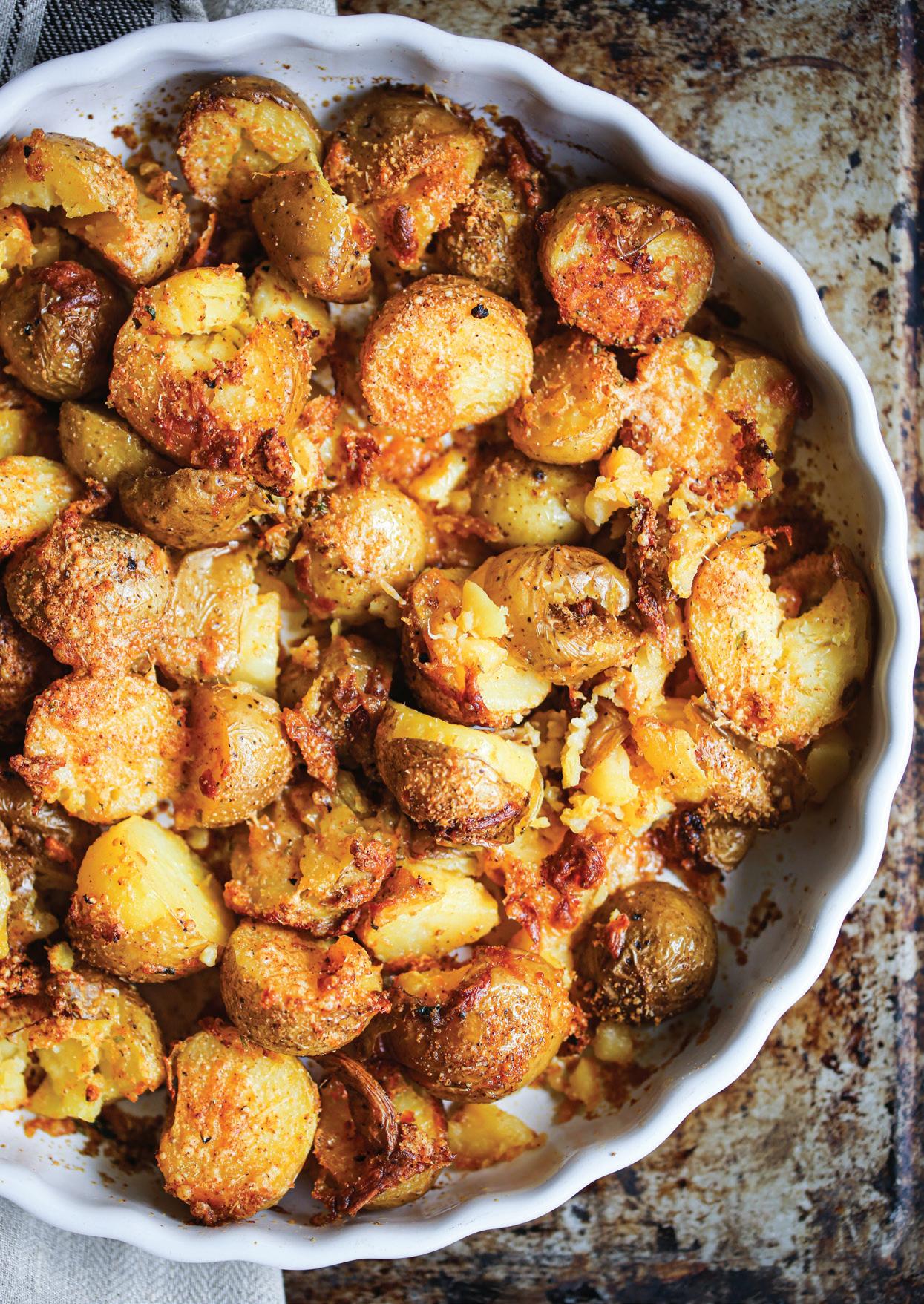
Ingredients
• 500 grams of new (freshly dug!) potatoes
• 4 finely chopped garlic cloves
• 50 gm butter
• 25 ml extra virgin olive oil
• ½ bunch finely chopped flat-leaf parsley
• Handful of finely chopped chives
• Sea salt and freshly ground pepper
Method
1. Rub the skin off the new potatoes
2. Bring them to a boil in salted water until tender, then drain
3. Return pot to heat and add oil and butter
4. Add potatoes and garlic and sauté until just crispy
5. Stir through herbs, salt and pepper
Enjoy!
We turn the spotlight on the weird and wonderful world of hydroponics with these five fascinating facts about the ultimate soil-free growing method...
1. Ancient origins: Hydroponic cultivation techniques date back to ancient civilizations such as the Hanging Gardens of Babylon, one of the Seven Wonders of the Ancient World, where plants were grown using hydroponic principles.


2. Plants in space: NASA has been exploring hydroponics for space travel since the 1990s. The controlled environment and efficient water usage make hydroponics an ideal solution for growing food in zero gravity.
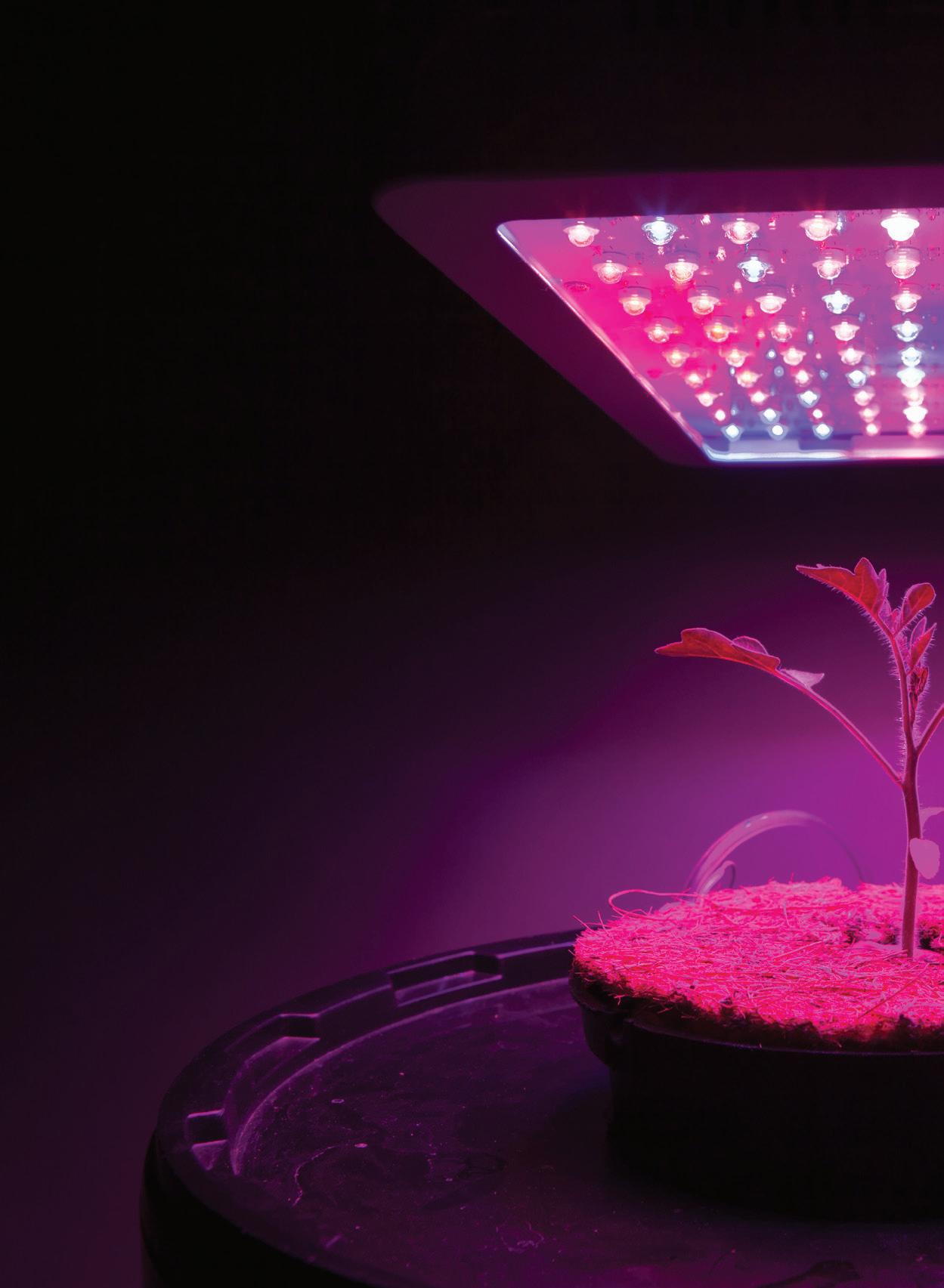

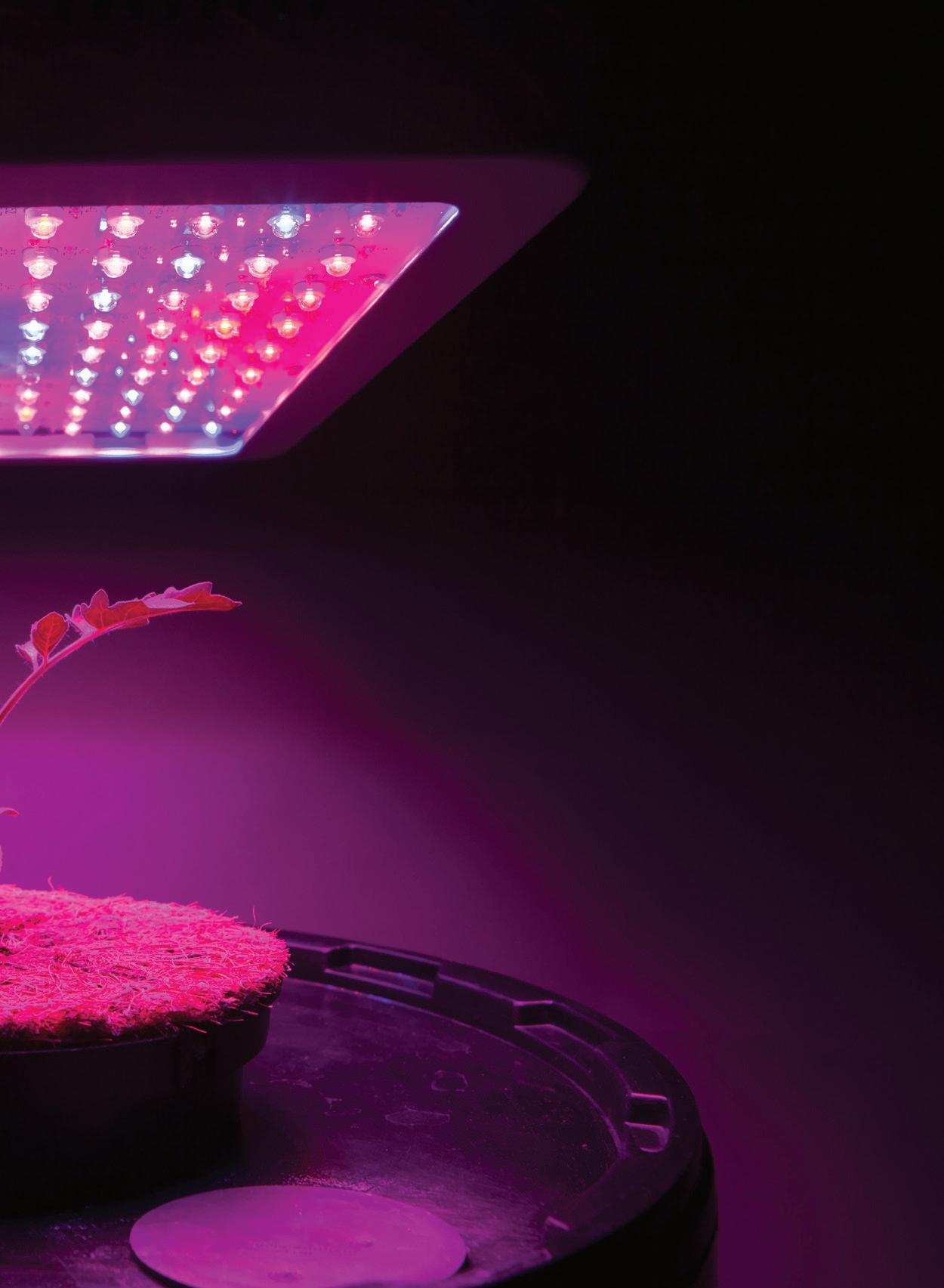
3. Up and at ’em: Hydroponics is a key component of vertical farming, which involves growing crops in vertically stacked layers. This innovative approach maximises space utilisation and allows for year-round cultivation in urban areas.
4. The fast and the furious: Plants grown hydroponically tend to grow faster than their soil-based counterparts. The direct access to nutrients and oxygen promotes accelerated growth and higher yields.
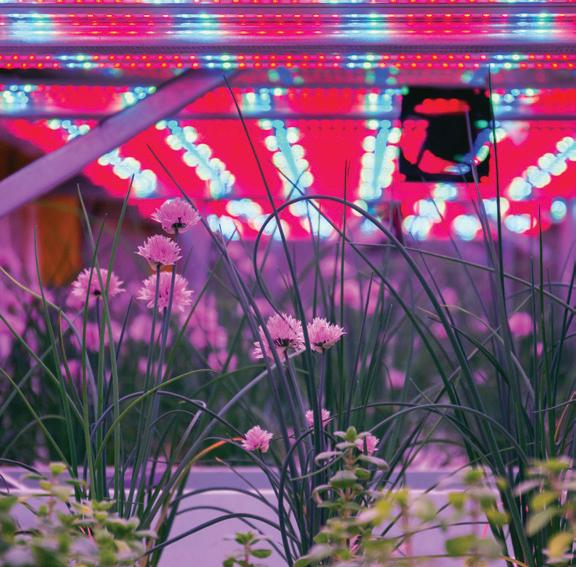
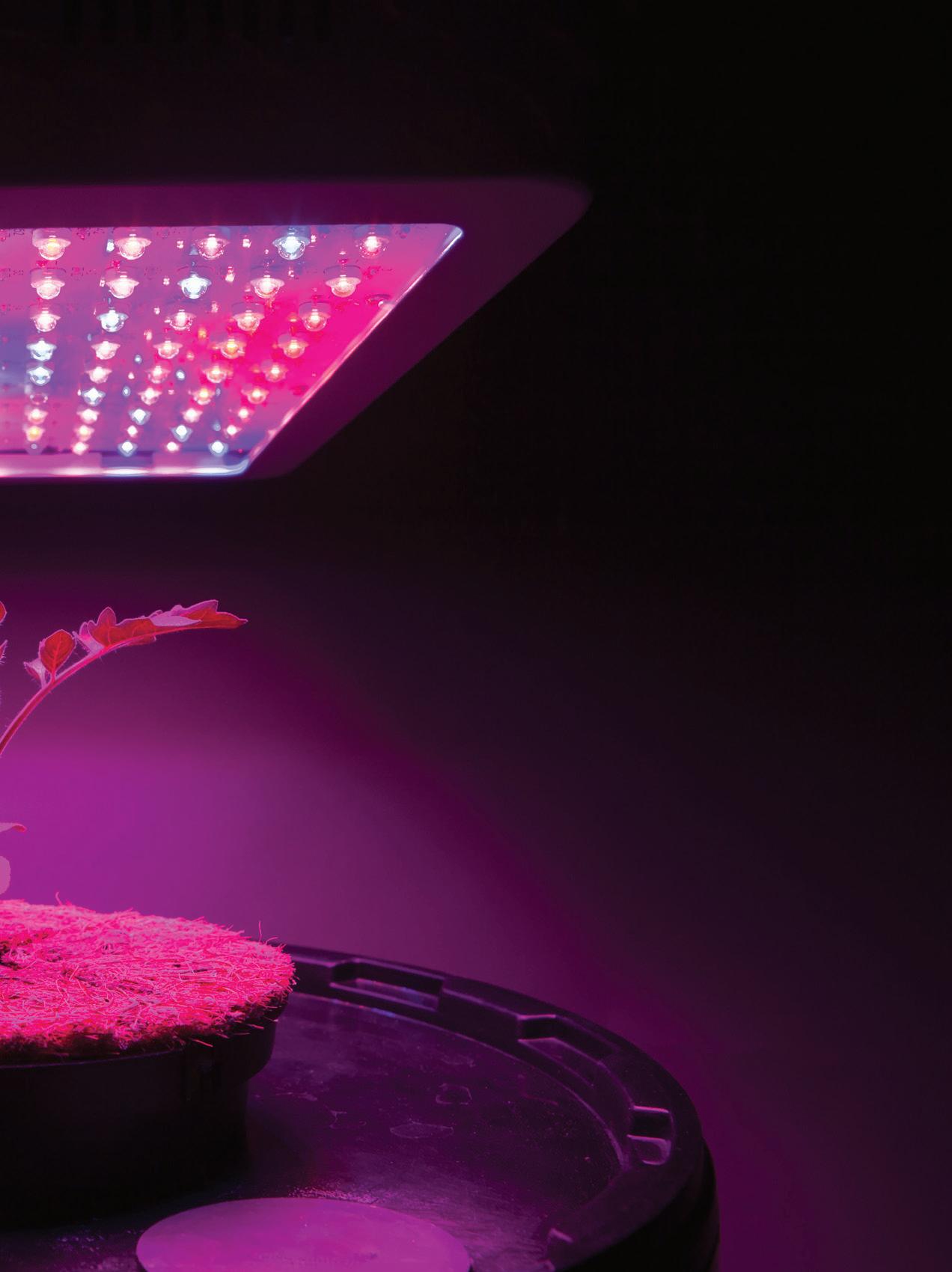
5. Weed free is the way to be: With hydroponics, there's no need to worry about weeds invading your garden. Since plants are grown without soil, there are no weed seeds waiting to sprout.
The dreaded root rot can be a hydroponic grower’s worst nightmare. Just like its soil-based counterpart, this condition affects the roots of plants, impeding their ability to absorb water and nutrients effectively. The result? Wilting plants, stunted growth, and an overall decline in health. But fear not! With a little know-how, you can prevent and combat hydroponic root rot.
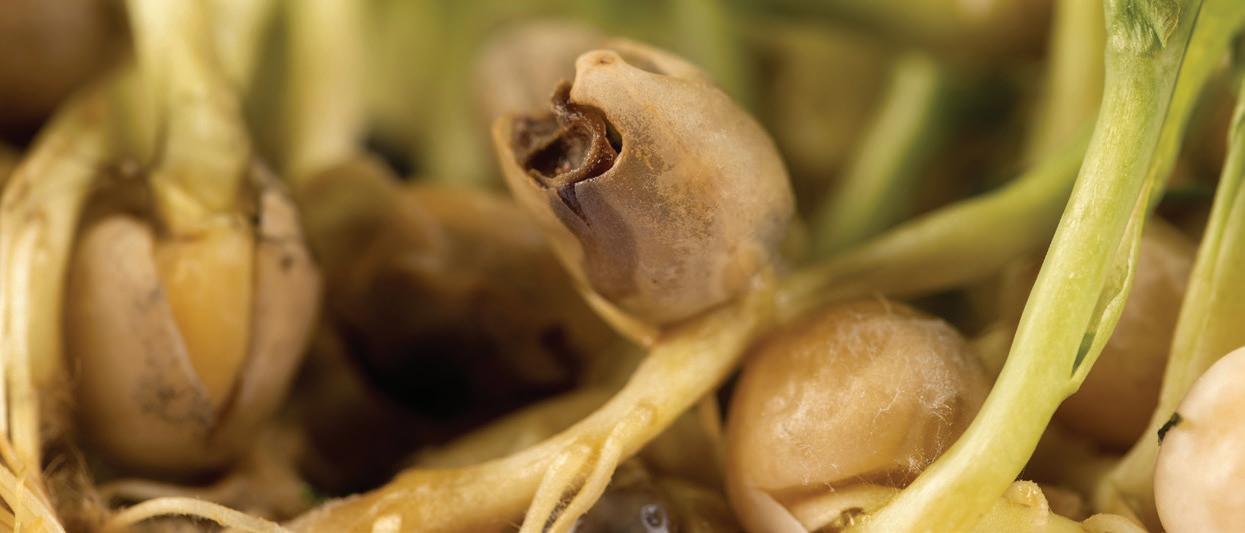

Hydroponic root rot is typically caused by waterborne pathogens, such as Pythium, Phytophthora, or Fusarium, which thrive in the waterbased environment of hydroponics. Once infected,

plant roots may appear brown, slimy, and mushy—a clear sign that trouble is brewing below the surface.
So, how can you tackle this menace? Prevention is key. Start by maintaining proper system hygiene.

Regularly clean and disinfect your hydroponic equipment, including the reservoir, pumps, and growing trays, to eliminate any potential pathogens. Implementing a good filtration system can also help.
Another vital aspect is maintaining a well-balanced nutrient solution. Monitor and adjust nutrient levels regularly to ensure they are within the appropriate range for your plants. Nutrient deficiencies
or imbalances can weaken the plants’ defenses, making them more susceptible to root rot.
In addition, providing adequate oxygenation is crucial. Oxygen helps promote healthy root growth and inhibits the growth of anaerobic pathogens.
Consider incorporating an air stone or air pump in your hydroponic system to improve oxygen levels and circulation.
If hydroponic root rot does rear its ugly head, swift action is essential. Remove any affected plants immediately to prevent the spread of the pathogens to healthy ones. Adjusting the pH and nutrient levels, as well as applying beneficial bacteria or fungicides specifically designed for hydroponics, can help combat the root rot and keep your hydroponic garden happy and disease-free.




Nestled in the heart of West Auckland, Hyalite Henderson is your go-to spot for all things gardening. It’s not just about business here; it’s a place run by folks who love gardening and are passionate about the industry.
The team at Hyalite Hydroponics are more than just salespeople; they’re gardening enthusiasts who are always eager to learn more. They’re into the latest gear and the newest cultivation techniques. And don’t forget Marley, the friendly chocolate Labrador, making the store feel welcoming.
When you step inside, you’ll find an array of lush in-store gardens showcasing everything from the tried-and-true pothos to the exotic pomegranate. The team take immense pride in these gardens, tending to them with dedication and expertise daily.
At Hyalite Hydroponics, it’s all about passion and innovation. Whether you’re a pro gardener or just starting, they’re here to help you up your gardening game. With 10 stores across New Zealand, Hyalite covers all your gardening needs. We have stores in Whangarei, Auckland, Hamilton, Tauranga, Hastings, Upper Hutt, Nelson, Christchurch and Dunedin.
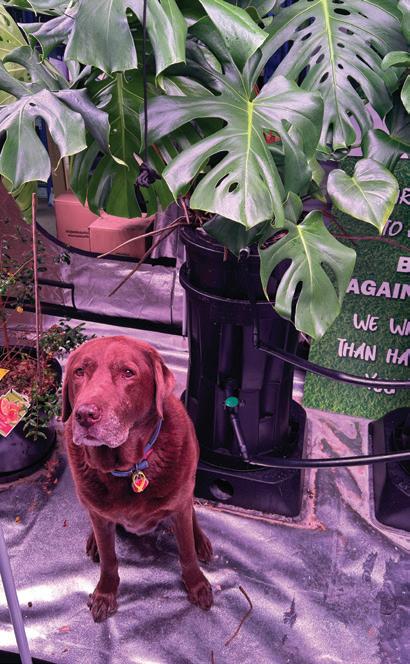
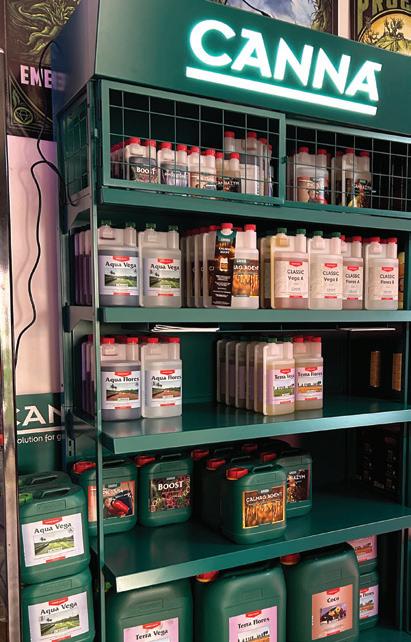
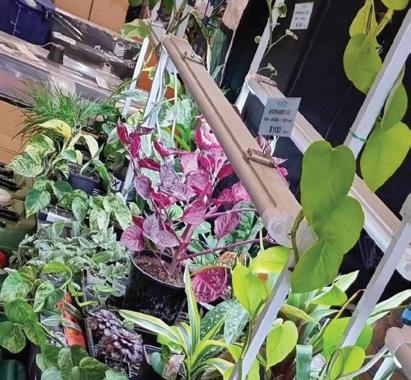



Ready to take your hydroponic gardening to the next level with the nutrient film technique (NFT)? Choosing the right NFT system can make all the difference in your success as a hydroponic gardener. But with so many options available, it's important to consider a few key factors when selecting the best hydroponic NFT system for your needs.
First and foremost, assess the size and space availability in your growing area. NFT systems come in various sizes, from compact setups suitable for small indoor gardens to larger systems ideal for commercial operations. Determine how many plants you want to grow and ensure that the system you choose can accommodate your desired plant count comfortably.


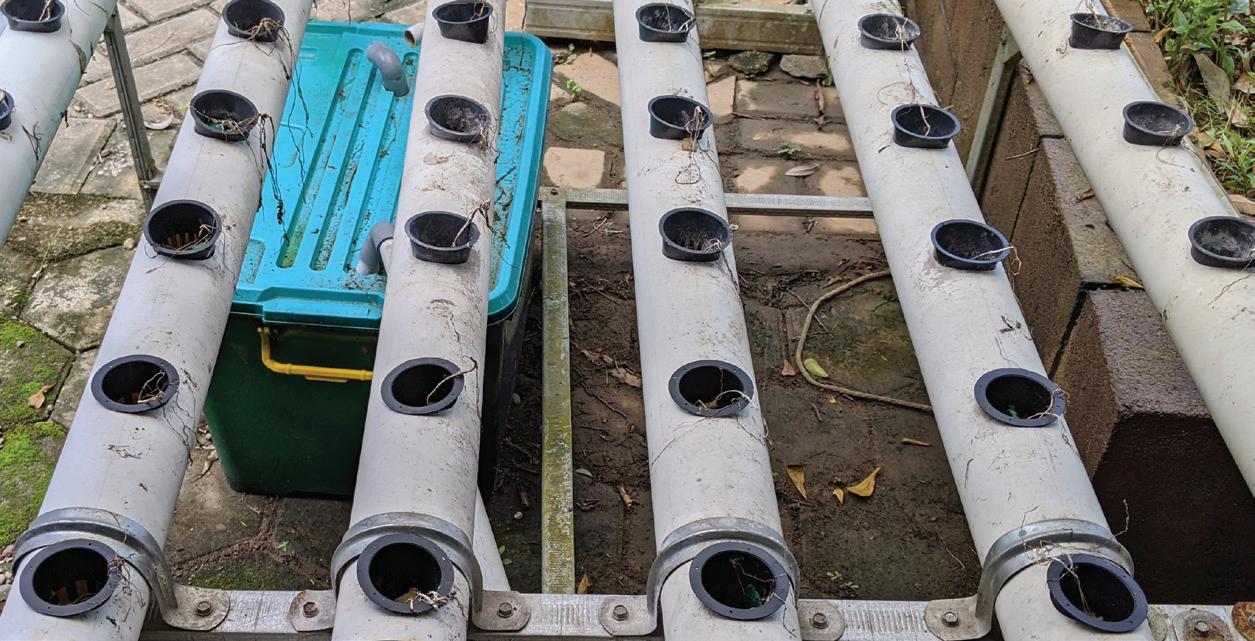
Next, investigate the construction materials of the NFT system. Look for systems made from durable materials such as food-grade plastics or PVC pipes. These materials are not only sturdy but also resistant to corrosion and degradation, ensuring a longer lifespan for your system.
Another important feature to evaluate is the slope or angle of the growing channels. The optimal slope allows the nutrient solution to flow smoothly, ensuring even distribution and preventing pooling or stagnant water. Look for systems with adjustable or customisable channel angles, as this will allow you to fine-tune the flow of the nutrient solution according to your plant's specific needs. Additionally, check the accessibility and ease of cleaning and replacing parts—this will save you time and effort in the long run if something goes wrong.


Consider the versatility of the NFT system—can it be easily expanded or modified to accommodate future growth or changes in your gardening needs? Choosing a system with modular components or the option to add-on extensions can provide flexibility and scalability as your hydroponic garden evolves. Lastly, don't forget to compare prices and value for money. Opting for a slightly higher-priced system that offers superior durability and functionality may prove to be a worthwhile investment in the long term.
By considering factors such as size, construction materials, slope, ease of assembly and maintenance, versatility, and value for money, you can confidently select the best hydroponic NFT system for your specific needs. Remember, a well-designed and efficient NFT system will provide the foundation for healthy plant growth, abundant yields, and a rewarding hydroponic gardening experience.



In this edition of CANNAtalk, we delve deep into the heart of CANNA Australasia, a beacon in the horticultural landscape. Join us as we uncover the secrets behind this green revolution.

Q: WHAT’S THE BUZZ ABOUT CANNA AUSTRALASIA, AND WHY IS EVERYONE TALKING ABOUT IT?
A: CANNA ISN’T JUST A BRAND; IT’S A LEGACY ROOTED IN SCIENTIFIC PIONEERING AND A PASSION FOR PLANTS.
Our journey began with a vision to revolutionise the horticultural space, and today, we stand as a testament to that vision. Here’s why both retailers and growers are raving about us:
Beyond sales, CANNA believes in nurturing relationships. Regular visits and calls equip you with the latest in horticultural advice and Dutch growing expertise. Whether you’re selling or growing, you’re empowered with confidence.
CANNA has been a beacon of scientific exploration since 1979. Before the brand took shape, our founders were already experimenting with plants, setting the foundation for the rigorous scientific scrutiny that every CANNA product undergoes today. This commitment to research ensures that every offering is not just market-ready but also a testament to horticultural excellence.


From our eye-catching in-store displays to exciting events like the Harley Davidson giveaway competition, CANNA’s promotions are hard to miss. Our in-store merchandising triples the interest compared to other offers. It’s a win-win for consumers looking for deals and retailers aiming for sales.
Today, CANNA’s influence spans continents, from Europe to Australia and beyond. Yet, we always balance our global reach with a local
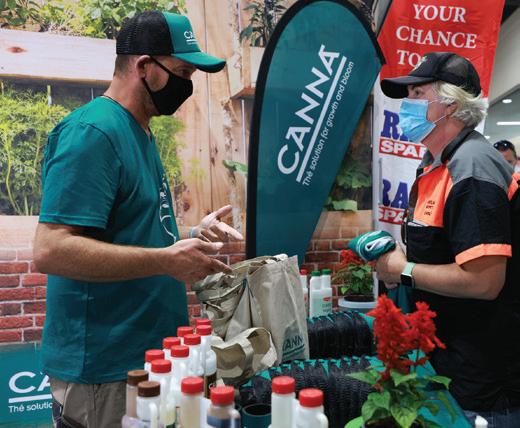
touch. Our philosophy is simple: “Be modest.” Instead of loud marketing campaigns, we let our products speak for themselves. This approach has resonated with professionals in over thirty countries, making CANNA a preferred choice in over 95% of grow shops worldwide.
We’re not just thinking about today. With continuous investments in technology and personnel, we ensure our partners are always a step ahead.
Our promotional materials don’t just sell; they educate.




For consumers, it means making informed choices. For retailers, it translates to a brand that sells itself.
The Mega CANNA Resource Website is a treasure trove of knowledge. From nutrient calculators to enlightening articles and videos, it’s a hub for all things green. And for the video aficionados, our official CANNA YouTube Channel is a goldmine.

Evolution is in our DNA. With the introduction of new product lines and enhanced packaging, we ensure there’s always something fresh on the
horizon for both consumers and retailers.
In a nutshell, CANNA Australasia is redefining the green space. For retailers, it’s about growth and support. For consumers, it’s about quality and trust. Together, we’re sowing the seeds for a greener tomorrow.
Stay rooted with us for more insights in the next edition of CANNATalk. Until then, let’s grow together!

